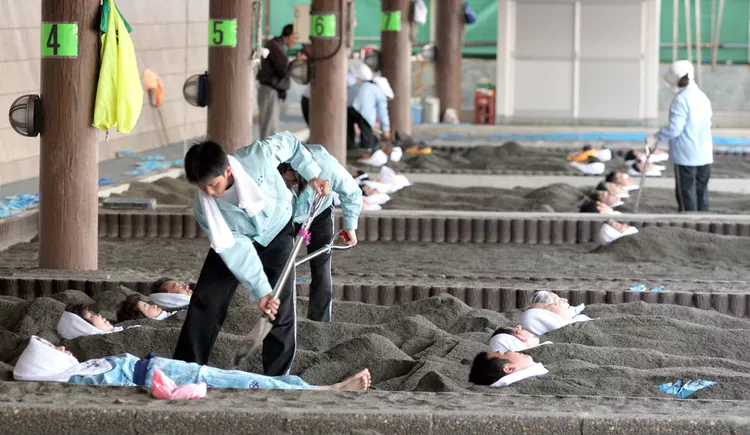Article Summary
History of Sand Baths
Do you love unusual spa treatments? A sand bath, also known as psammotherapy, might be the perfect experience for you. This ancient healing tradition has gained popularity due to its numerous health benefits.
Sand bathing is experiencing a resurgence, as highlighted in a 2015 SpaFinder report. The therapeutic properties of sand baths are deeply rooted in history, designed to reduce pain and promote relaxation. By uniformly warming the body, sand helps alleviate musculoskeletal and arthritic pain. Like a sauna or steam room, the heat induces sweating, which aids in detoxifying the body while the sand absorbs moisture.
The earliest recorded reference to therapeutic hot sand burial dates back to ancient Egypt’s Siwa. In contemporary times, sand baths can be found in the deserts near Merzouga, Morocco, where local Berbers offer this unique experience to tourists. The process remains traditional: a shallow hole is dug in the warm sand, where the “customer” reclines face-up with only their head exposed while being covered in heavy sand. After about twenty minutes, the Berber removes the sand, leaving guests feeling refreshed and revitalized.
Where to Experience Sand Therapy
For those seeking more luxurious options, Qasr Al Sarab Desert Resort by Anantara in Abu Dhabi provides an exquisite sand therapy experience. Furthermore, the ambitious Al Uqair tourism project in Saudi Arabia is set to feature a dedicated sand bathing center, emphasizing the treatment’s growing popularity.
One of the most notable locations to enjoy a sand bath is on the southern Japanese island of Kyushu, renowned for its warm volcanic soils and hot springs. Visitors can experience a unique sand bath while wearing a traditional yukata. Attendants cover bathers in heavy sand, which enhances relaxation and detoxification despite the initial discomfort of immobility.
Additonally, Brenner’s Park in Baden-Baden, Germany, has been providing hot sand therapy for decades, while this trend now spreads across locations from Madeira to Uzbekistan and Korea, as spa aficionados embrace the therapeutic benefits.
Innovative technologies, such as Gharieni’s MLX Quartz sand table, are emerging, allowing guests to enjoy the warmth of sand coupled with therapeutic massages. Top spas, including Spa Nalai at the Grand Hyatt in Manhattan and the newly renovated Four Seasons Hotel Riyadh in Saudi Arabia, are now incorporating these sand tables into their offerings.
As the popularity of sand baths grows, it reflects a broader trend incorporating Islamic-influenced spa treatments, utilizing Middle-Eastern medicinal plants, spices, and fruits in treatments. Such evolution signifies the enduring appeal and cultural significance of this ancient practice.





